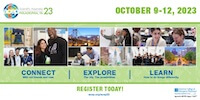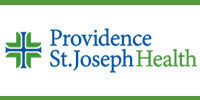- September 15,2025 | ISSN 1940-6967
- The National Association Of Medical Doctors
Featured Sponsors
Are You Ready For Measles' Wrath?
By Claire Panosian Dunavan, MD
Paul Natterson, MD, was very sick -- and scared. One day, the 26-year-old intern was seeing patients at a county hospital and attending a concert at the Hollywood Bowl. The next morning, he was so fatigued he could barely walk. High fevers, a burning throat, and a throbbing headache soon followed -- but no rash.
Natterson's first emergency department (ED) visit revealed normal labs and an unremarkable chest x-ray. He was quickly discharged with the vague, discomfiting diagnosis of a "viral syndrome." Once back home, he worried he might actually die in his bed.
A day later, Natterson's sister (also an MD) brought him back to the ED. Now tachypneic and hypoxic, the intern's x-ray still held no clues. Given the year (1989), a new idea surfaced among his colleagues: Might the young trainee have occult Pneumocystis pneumonia? Natterson, who lacked HIV risk factors or other immune compromising conditions, politely declined treatment with pentamidine.
Finally, around 9 a.m. the following day, I arrived on the ward. Entering Natterson's hospital room, I immediately saw new, ruddy blotches on his face, and alarm bells rang.
"Hello," I blurted out, and after promising to return, firmly shut his door.
"Hey! We need masks and respiratory isolation ASAP!" I remember saying to a nurse in the hall. "I think he has measles!"
Some Checkered Vaccine History
Wow, how time flies. Today, Natterson is a highly-respected cardiologist who has practiced in Los Angeles for three decades. He's a native of this city, as am I. When recently speaking on the phone, we traded notes on childhood vaccines.
In my case, since I never had measles, I initially received the inactivated (killed)-virus vaccine approved in 1963 and withdrawn 4 years later. Why? That shot, scientists eventually learned, triggered "atypical measles" and interstitial pneumonitis in people later exposed to rubeola.
But, blissfully unaware, I fell through the cracks. It was not until 1980 when a negative measles titer (checked during my fellowship in Boston) prompted my first-ever protective jab containing the live-attenuated Edmonston-B strain of measles.
On the other hand, Natterson, who is 12 years my junior, has neither records nor memory of receiving any measles vaccine before falling ill. But even if previously inoculated with a single dose of measles-mumps-rubella (MMR) vaccine, it might not have done the job. Recommendations for a two-dose MMR series began the same year he got measles, largely fueled by an outbreak that included children who had also been vaccinated with the then-recommended single dose.
So, what does that tell us? Minus those more recently vaccinated, at least some seronegative adults now in their 60s and 70s could be susceptible over coming years when measles continues to plague our increasingly vaccine-hesitant nation.
Finally, consider the oft-repeated statement that if born in the U.S. before 1957, you can basically assume you had natural measles. As it happens, that wasn't true either for my older brother or me. Nor does it jibe with modern internet intel. If you dig deep enough on Google, its AI statement reads: "Surveys suggest that 95% to 98% of people born before 1957 are immune to measles."
Just saying, not all boomers are safe. Or, to quote Natterson: "Even if 1 or 2% didn't have measles, it's still a lot of people. They'd have been fine as adults in a world of vaccinated people -- not so much today!"
One Man's Measles
Back to the saga of our sick intern. As shown by repeated arterial blood gases, Natterson remained hypoxic and required oxygen for several days. But he was not just distressed by his labored respiration and rash. Natterson also developed diarrhea, a feature of measles far less familiar in the U.S. than in places where infected children may also be malnourished.
Fortunately, Natterson's diarrhea stopped in time to dodge sigmoidoscopy. But his total time in hospital? Nearly a week. Time spent recovering at home following discharge? Another week. Time elapsed before feeling normal? Another month.
And that's the story of measles in an otherwise healthy adult in the prime of life, uncomplicated (thankfully) by a secondary bacterial infection or measles encephalitis.
A final takeaway for Natterson following his first, somewhat thoughtless discharge from the ED: What young, healthy person with such severe symptoms goes to an ED in the first place if they're not really sick? Today, it's a truth he continues to preach. Think twice before dismissing symptoms in an adolescent or young adult. Just because she or he is young that doesn't mean they can't crash and burn.
In addition, I thank God we now have better tools to rapidly diagnose a whole lot of folks previously labeled as having "a viral syndrome."
What Lies Ahead
Recent newspaper stories speak volumes. For example, a couple weeks ago: "A 1990 Measles Outbreak Shows How the Disease Can Roar Back" and: "Vaccine skepticism crisis spills over as students return to school."
In short, even though the recent U.S. surge and 33-year high in cases of measles has now cooled, let's not be naïve. What seems likely is that our coming winter and spring will bring even higher counts.
In addition, although Natterson is now immune to measles, other adults are not. And not to sound cynical, but what will it ultimately take to awaken those who are still blasé or misinformed about the need for robust herd immunity, both here and abroad? More sad stories of innocent kids who got very sick or died after a parent withheld an MMR vaccine -- or the same outcome in certain unsuspecting, prominent adults?
One more caveat. In the future, due to hobbled public health surveillance and patient self-reporting, we should expect official data to underestimate measles in Americans of all ages.
At the same time, we could also gain insights into how much, or how little, our privileged country values children's lives versus those of adults.
Articles in this issue:
- Highest On-Call Pay, By Physician Specialty
- Are You Ready For Measles' Wrath?
- The Skills Boosting Physicians’ Value In The Next 5 Years
- Why Doctors Regret Specialty Choices In Their 30s
- The Doctors Building A Public-Health Universe Outside The Government
- The Relative Value Of Relative Value Units
- What Is Guideline Creep In Medicine?
Top Physician Opportunities
Journal of Medicine Sign Up
Get the Journal of Medicine delivered to your inbox.
In This Issue
- Highest On-Call Pay, By Physician Specialty
- Are You Ready For Measles' Wrath?
- The Skills Boosting Physicians’ Value In The Next 5 Years
- Why Doctors Regret Specialty Choices In Their 30s
- The Doctors Building A Public-Health Universe Outside The Government
- The Relative Value Of Relative Value Units
- What Is Guideline Creep In Medicine?
Archives
Masthead
-
- Editor-in Chief:
- Theodore Massey
- Editor:
- Robert Sokonow
- Editorial Staff:
- Musaba Dekau
Lin Takahashi
Thomas Levine
Cynthia Casteneda Avina
Ronald Harvinger
Lisa Andonis
Leave a Comment
Please keep in mind that all comments are moderated. Please do not use a spam keyword or a domain as your name, or else it will be deleted. Let's have a personal and meaningful conversation instead. Thanks for your comments!















*This site is protected by reCAPTCHA and the Google Privacy Policy and Terms of Service apply.